The Virgin of Guadalupe – the Patroness of Mexico
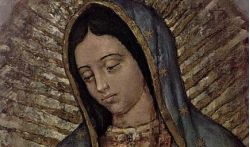
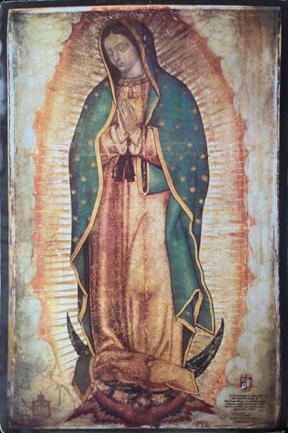
The holiday takes its origin in the XVI century. Its history deals with the apparition of the Virgin Mary to a seventeen peasant Juan Diego on the 9th of December of 1531. On this day on the Tepeyac Hill (the north of modern Mexico City) the Virgin asked the young man for build a church on the site where his brothers could pray to the Virgin Mary, turning to her with requests for help and talking about their troubles. Juan Diego, shaken by what he saw, went straight to the Bishop Juan de Zumarraga and told him the words of the Blessed Virgin. However, the Bishop listening to the young man carelessly only laughed at him.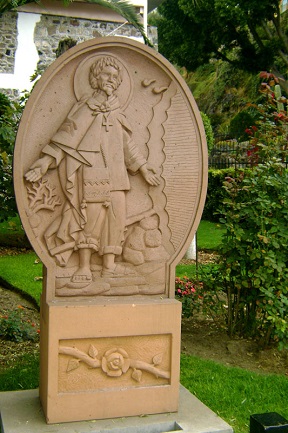
The next day at the same place the Virgin Mary appeared to Diego again. She calmed to agitated young man and asked him to return to the bishop with the same request. When Juan de Zumarraga was reported that the same peasant that came yesterday is waiting for him, the bishop surprised by the young man’s perseverance could not reject an audience. Diego repeated his words and added that he met again with the Virgin Mary and that she insists on the necessity of the building of a church. Puzzled bishop could no longer ignore this message, but also he did not like believe in Diego’s words, and therefore he demanded to give him an evidence of what happened.
The 11th of December, intending to ask the Blessed Virgin about some wonder that he needed to convince the bishop of the truthfulness of his words, Diego came to the Tepeyac Hill and saw the Virgin again. "I will give you a sign," – she said, and asked the young man to back to the hill the next day.
The 12th of December, when Diego climbed up to Tepeyac for the fourth time, he saw the luxuriant bush of red roses that budded on a barren rock, and the Virgin Mary was standing near. Tightening in his cloak the roses which he cut by the request of Our Lady, Diego rushed to the bishop. In front of him and his advisers, the young man unfolded his cloak – and the face of the Blessed Virgin not made by hands was shown miraculously on it!
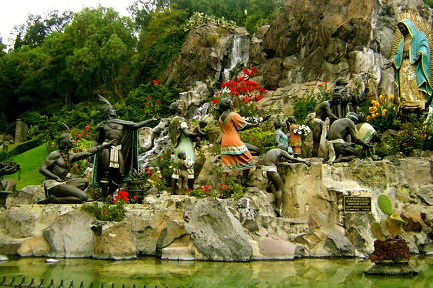
And in the evening it became clear that a seriously ill Diego’s uncle, to whom the peasant was going on the first day of the meeting with the Virgin Mary, was healed at one moment by a fine dark-skinned stranger, that said to goodbye: "Call me Santa Maria de Guadalupe and do not hesitate to ask me for anything, I will always help you."
The next day, Juan Diego and the Bishop Juan de Zumarraga accompanied by all the priests of Mexico City took a thanksgiving Mass on a Tepeyac Hill and began the construction of the church immediately. Originally it was a small chapel built for 5 days.
Since that moment, according to the church books, the mass appeal of the native residents of Mexico to Catholicism began. Since its consecration the Basilica of Nuestra Señora de Guadalupe, which has become the second most popular place of pilgrimage in the Catholic world after the Vatican, attracted a lot of people of different nationalities from all over Latin America, wishing to pray to the Patroness of both continents.
The actual complex of church buildings on a Tepeyac Hill in the north of the capital of Mexico, dedicated to the Blessed Virgin of Guadalupe, includes the famous Church of Nuestra Señora de Guadalupe, as well as the new basilica (1976-1977), the Capuchin Church, several chapels and the building of the Museum of religious art, which exhibits the numerous gifts from pilgrims to the Virgin Mary.
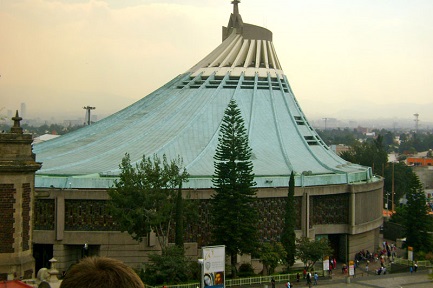
The first Church of the Virgin of Guadalupe was built in 1531-1534. The next years it was repeatedly rebuilt and enriched by new elements. The actual building of the Church of Nuestra Señora de Guadalupe refers to 1695-1709 and is a shining example of the Spanish-American baroque. The height of the golden dome of the church is 40 m. The four tall slender towers are adjacent to the building. Today this church is colloquially called as the old basilica.
In the XX century the popularity of the church complex reached its peak, and the building of the old basilica could no longer cope with the flow of believers. Then, in the 1976-1977, it was decided to construct a building of the new basilica by the project of architect Pedro Ramirez Vazquez. It was designed for the simultaneous presence of 10 thousand people in it. The globally famous image of the Virgin of Guadalupe, miraculously imprinted on the cloak of the peasant Juan Diego is stored now in the chancel of the new basilica.
The origin of the image raises many questions. For a half of century the scientists try to unravel the mystery of the Blessed Virgin of Guadalupe using the latest hardware and technology. At the moment it is known that the Diego’s cloak is woven of fibers of cactus ayah – a very short-lived material that is able to be intact for no more than 20-30 years.
The eyes of the Virgin perplex to scientists too. It was possible to detect in them the phenomenon of reflection, peculiar only to a living person. In 1929, the professional photographer Alfonso Marche distinguished the reflection of a bearded man in the right eye of the Virgin, and twenty years later the researcher Jose Carlos Salinas Chavez saw the image of a man in the left eye of the Virgin too.
In 2001 the Peruvian scientist Jose Tonsmann did a sensational discovery: increasing the size of the pupils of image of the Virgin Mary in 2500 he saw in them a reflection of Juan Diego, of the Bishop Zumarraga, of the black slaves that he owned, of some priests and of the families of peasants. Were 12 figures in total, captures in perspective in such way, as if the image is a photograph of what the Virgin Mary saw.
Which other secrets a sacred painting hides is unknown. Perhaps we – the people of the XXI century – are on the verge of amazing discoveries related to divine origin of the man. The fact remains that the miracles happen, and believe in them or not is the opinion of the person.
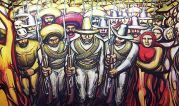
Mexico’s Revolution Day (Dia de la Revolución) is a national public holiday that celebrates a 10-year revolution that began in 1910 to end the struggle against dictator José de la Cruz Porfirio Díaz Mori. The public holiday falls on the third Monday in November, near the official day on November 20.
The Mexican Revolution was challenged by Francisco I. Madero, a reformist writer and politician. When Díaz refused to allow clean elections, Madero's calls for revolution were answered by Emiliano Zapata in the south and Pascual Orozco and Pancho Villa in the north.

It is difficult to imagine much Mexican dish than mole poblano – a thick brown sauce in which Mexicans prepare turkey or chicken. Its sweet flavor, the clear evidence of the presence of chocolate, causes a lot of associations about the country, which gave something much more important to the world of gastronomy than fajitas or enchiladas.















